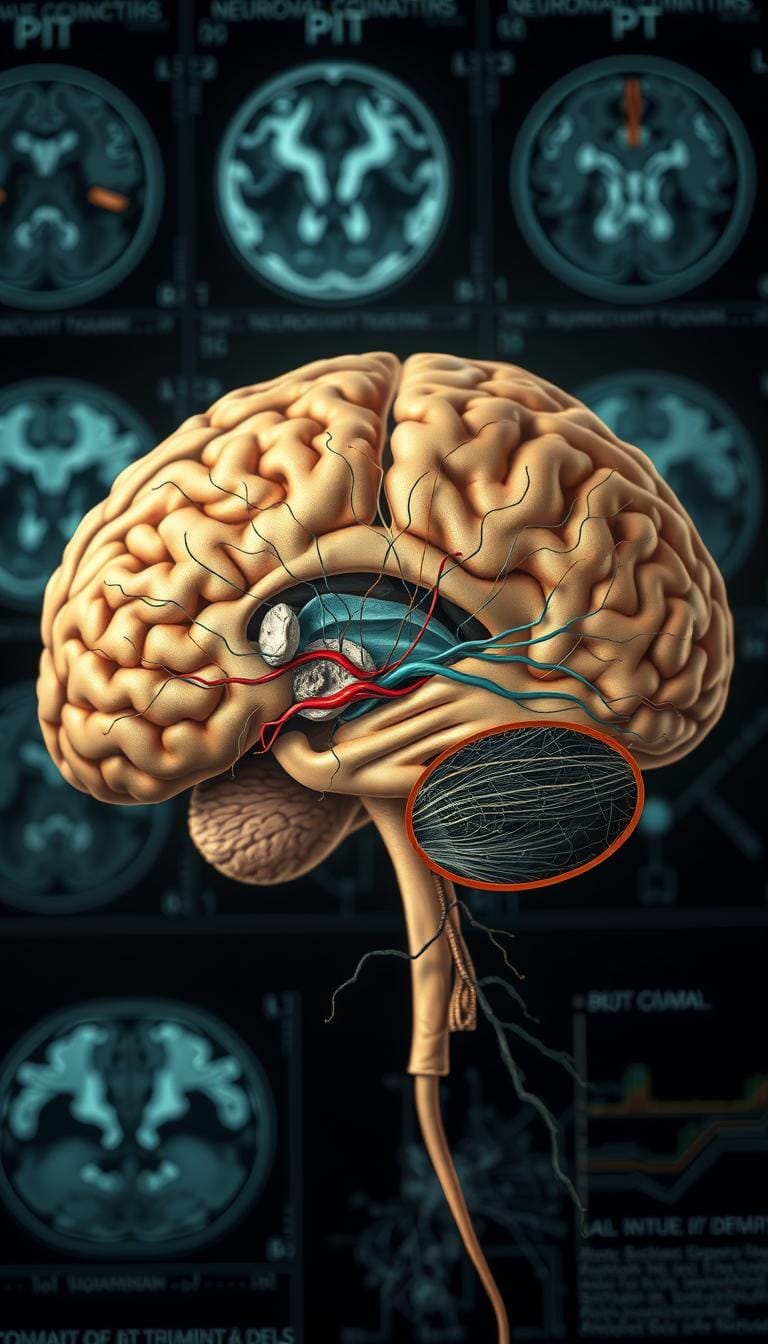Music Therapy Methods: How to Heal Trauma in 3 Steps
Table of Contents
I remember the day I found out about music-based interventions. It was during my journey with trauma healing. Music became a source of comfort for me.

My experience with music therapy methods changed me. Studies show music can help us express and process emotions. This is key for healing from trauma (https://www.ncbi.nlm.nih.gov/pmc/articles/PMC7251374/).
My healing journey has three steps. First, I acknowledge my feelings. Then, I express them through music. Lastly, I release them. This process has helped me heal and see life differently.
My story shows how important music therapy methods are for trauma healing. I hope my experience encourages others to try music therapy.
My Personal Trauma Healing Journey
The traumatic event I experienced was a turning point in my life. It led me to explore music therapy. This moment changed my view on healing and recovery.
The Trauma That Shattered My World
The traumatic experience I went through was overwhelming. It affected every part of my life. Research from the National Center for PTSD shows trauma can deeply impact mental health, causing anxiety and depression.
The emotional pain was intense. It made everyday tasks hard. I felt isolated and alone, struggling to heal.
My First Encounter with Music Therapy
My introduction to music therapy was key in my recovery. I found music could express and process emotions tied to my trauma. Through music therapy, I found solace and comfort.

As I kept with music therapy, my mental well-being improved. Therapeutic music techniques helped me manage my emotions and heal.
| Technique | Benefit |
|---|---|
| Music Listening | Reduced stress and anxiety |
| Vocal Expression | Emotional release and catharsis |
| Songwriting | Narrative reframing and empowerment |
Looking back, music therapy was key in my healing. It gave me a healthy way to express emotions and regain control over my life.
Understanding How Trauma Affects Your Brain and Body
It’s important to understand how trauma changes our brain and body. Trauma doesn’t just hurt our feelings; it changes how we think and feel. This is key to finding ways to heal.

The Neuroscience of Trauma Responses
Studies on the neuroscience of trauma show that it can change our brain. It affects areas like the amygdala and hippocampus. This can make it hard to calm down and remember new things.
When we experience trauma, our body goes into “fight or flight” mode. This is meant to be short-lived. But for those with trauma, it can last too long. This leads to physical and emotional problems.
Why Traditional Talk Therapy Wasn’t Enough for Me
For many, including me, talk therapy wasn’t enough. It helps, but it doesn’t reach deep enough. It focuses on what we think, not how we feel or our body’s response.
Some big issues with traditional talk therapy are:
- It’s hard to talk about traumatic experiences
- It doesn’t focus enough on how our body reacts
- It can make us feel worse by reliving the trauma
Music therapy offers a different way to heal. It works with both our brain and body, helping us recover in a more complete way.
Effective Music Therapy Methods That Changed My Life
My healing journey was deeply influenced by music therapy. I found that it’s more than just a help. It’s a strong tool that can change how we recover from trauma.
How Music Impacts Brain Function During Trauma Recovery
Studies show music affects the brain in big ways during recovery. It touches areas linked to feelings, memories, and happiness (https://www.ncbi.nlm.nih.gov/pmc/articles/PMC5811414/). Music therapy approaches make the brain feel good by releasing dopamine. This helps fight the bad effects of trauma.
Using music-based interventions helped me feel less stressed and happier. Music therapy changed how my brain handled traumatic memories. Over time, these memories became less painful.
Clinical Evidence Supporting Music-Based Interventions
Research backs up the power of evidence-based music therapy. It shows music therapy can really help with anxiety, depression, and PTSD.
“Music therapy has been shown to be an effective adjunctive treatment for individuals with trauma-related disorders.”
This research shows music therapy is a key part of treatment plans.
Adding music therapy approaches to my life made me feel better overall. The science behind music therapy confirmed what I felt. It showed music’s incredible healing power.
Preparing Your Mind and Space for Healing
Reflecting on my music therapy journey, I see healing isn’t just about the methods used. It’s also about setting up a healing environment. My experience shows that our surroundings greatly affect our mental and emotional health.
To get your mind and space ready for healing, understanding the role of a healing environment is key. This means both the physical space and mental preparation. A calm and tidy environment boosts music therapy’s effectiveness. For example, I rearranged my living room to make it peaceful. This helped with relaxation and reflection.
Setting Up Your Personal Healing Environment
Creating a healing space is a personal journey. It’s about finding what brings you peace and comfort. For me, having a quiet spot for music therapy without distractions was essential.
To set this up, consider these steps:
- Declutter your space to clear your mind
- Add elements of nature, like plants or water features
- Choose calming colors and textures for your decor
- Make sure the space feels welcoming and comfortable
Tools and Resources I Found Essential
In my journey, some tools and resources were key. A good sound system or musical instrument is vital for music therapy. Also, guided meditation playlists and journals for reflection were essential. These tools help create a complete healing environment for both mental and emotional health.
| Tool/Resource | Purpose |
|---|---|
| Sound System/Musical Instrument | For playing therapeutic music |
| Guided Meditation Playlists | To guide relaxation and focus |
| Journal | For reflection and recording progress |
Step 1: Resonance – Creating Your Trauma Healing Soundtrack
## Step1: Resonance – Creating Your Trauma Healing Soundtrack
Creating a trauma healing soundtrack is a personal and powerful step in the music therapy process. For me, it involved curating a collection of songs that resonated with my emotional state and facilitated my healing journey. “The right music can transport you back to a moment, a feeling, or a place,” I realized, as I began to understand the significance of resonance in music therapy.
### How I Selected Music That Connected with My Trauma
When I started selecting music that connected with my trauma, I found that certain melodies and lyrics triggered memories, emotions, and sensations. I looked for songs that mirrored my emotional state, whether it was sorrow, anger, or hope. I recall listening to“Someone You Loved”by Lewis Capaldi, and feeling a deep sense of resonance with the emotions conveyed in the song. The lyrics and melody seemed to validate my feelings, making me feel less isolated in my struggles.
### Building Emotion-Specific Playlists for Different Healing Phases
As I progressed through my healing journey, I created emotion-specific playlists tailored to different phases of my recovery. For instance, during the initial stages, I focused on playlists that acknowledged my pain and sorrow. A playlist titled“Reflection and Release”included tracks like“Hallelujah”by Jeff Buckley, which helped me process my grief. As I moved towards healing, my playlists shifted to include more uplifting and hopeful tracks, such as“Brave”by Sara Bareilles, which encouraged me to embrace my resilience and strength.
By creating these emotion-specific playlists, I was able to use music as a tool to navigate the different stages of my healing process, ensuring that I was always resonating with the right emotions at the right time. This intentional use of music therapy techniques not only enhanced my emotional regulation but also supported my overall well-being.
Step 2: Expression – Releasing Trapped Emotions Through Sound
The second step in my music therapy journey was about using sound to release trapped emotions. I found that sound is a powerful way to express feelings that are hard to say out loud.
Through different music therapy methods, I learned that sound can be very freeing. It helped me face and release trapped emotions in a good way.
Vocal Toning Exercises That Unlocked My Voice
Vocal toning exercises changed my life. They let me use my voice to make different sounds and release tension. Studies show that vocal toning can make you feel better mentally and emotionally, lowering stress and anxiety.
Rhythmic Drumming Patterns That Released My Anger
Rhythmic drumming helped me deal with anger. Drumming is a physical way to express and process emotions. Research shows it can help with anxiety and depression.
How I Wrote Songs to Reframe My Trauma Narrative
Songwriting was a key tool for me to change how I saw my trauma. Writing about my experiences helped me understand and process my trauma. This creative way of expressing myself helped me see myself in a new, empowered light.
These music therapy methods helped me release trapped emotions and move forward. Using vocal toning, rhythmic drumming, and songwriting gave me a full way to express and heal from my trauma.
Step 3: Integration – Rewiring Your Brain Through Music
As I continued on my healing journey, I found out how important music therapy is. It’s about changing how my brain reacts to trauma. Music was key in this change.
Music therapy wasn’t just about listening to songs. It was about making it a regular part of my life. Studies show that music can change our brain, helping us manage emotions better (https://www.ncbi.nlm.nih.gov/pmc/articles/PMC5867761/). This daily practice was a big part of my healing.
My Daily Music Meditation Practice
I picked music that matched how I felt each day. I made playlists for my mood, using music meditation to calm or energize me. This helped me understand my emotions better, making it easier to handle stress.
Combining Movement and Music for Full-Body Processing
Another important part was mixing music with movement for full-body processing. Dancing or doing yoga with music helped me deal with trauma deeply. This way, I could release feelings and find calm more easily.
| Activity | Music Type | Emotional Response |
|---|---|---|
| Dance | Upbeat, energetic | Release of tension, joy |
| Yoga | Calming, instrumental | Relaxation, focus |
In conclusion, adding music therapy to my daily life changed everything. Using music therapy approaches like meditation and movement with music helped me heal. Music has been a powerful tool in my recovery.
When to Seek Professional Music Therapy Support
When dealing with trauma, knowing when to seek help from a certified music therapist is key. Self-guided music therapy can help, but sometimes professional help is needed for safe and effective healing.
On my own trauma recovery journey, I learned the value of professional help. There were times I felt overwhelmed or couldn’t progress on my own. That’s when a certified music therapist can really help.
Recognizing the Limitations of Self-Guided Practice
Self-guided music therapy is powerful but has its limits. Without guidance, you might face painful memories or emotions you can’t handle. A certified music therapist can offer the support and guidance you need.
Also, a certified music therapist knows how to tailor music therapy to fit your needs. They can spot risks and help you avoid them, making your healing safer and more effective.
My Experience Working with a Certified Music Therapist
Working with a certified music therapist was a game-changer for me. They helped me face my trauma safely and supported me every step of the way. They created a music therapy plan just for me, tailored to my needs and goals.
In our sessions, I learned a lot about clinical music therapy methods and how they apply to me. The therapist gave me a safe space to express and process my feelings, using music to help me heal.
Overcoming Setbacks in Your Music Therapy Journey
Music therapy has its ups and downs, just like any healing journey. My own experiences show that healing through music is not always straightforward. There are times of deep emotional release and times when progress seems slow.
Handling Emotional Flooding During Musical Exercises
One big challenge I faced was emotional flooding during music therapy. This happens when the music’s emotions overwhelm you, making it hard to keep going. To deal with this, I learned to ground myself by focusing on the present. Deep breathing or physical movement helped me stay in the moment.
Creating a safe space for my music therapy was also key. I set up an environment where I felt free to express all my emotions without fear. This allowed me to dive deep into the music and face my feelings directly.
Adapting Techniques When They Don’t Work Initially
Not every music therapy technique works for everyone. It’s important to be flexible. When a technique didn’t work for me, I would adapt it or try something new. For example, if vocal toning was too much, I’d listen to music that matched my mood. This helped me slowly process my emotions.
Being open to change helped me keep moving forward in music therapy, even when faced with setbacks. This flexibility not only made me stronger but also helped me understand the healing process better.
Music Therapy Methods for Trauma Recovery
Music therapy is a powerful tool for trauma recovery. It uses various methods to help individuals heal from traumatic experiences. These methods include:
- Improvisation: This involves creating music in the moment, allowing individuals to express their emotions and experiences.
- Composition: Creating music from scratch helps individuals process their emotions and develop a sense of control and empowerment.
- Improvisation with Technology: Using technology, such as digital instruments, allows individuals to explore new sounds and express themselves in unique ways.
- Improvisation with Voice: Singing and vocal improvisation provide individuals with a means to express their emotions and experiences through sound.
- Improvisation with Movement: Combining music with movement allows individuals to express themselves physically and emotionally.
- Improvisation with Visual Arts: Incorporating visual arts, such as painting or drawing, into music therapy sessions allows individuals to express their emotions through different mediums.
These music therapy methods help individuals process their emotions, develop coping strategies, and find a sense of healing and recovery. By providing a safe space for expression and exploration, music therapy can be a powerful tool in the journey towards trauma recovery.
Healing Symphony: A Case Study
“Music therapy has been a game-changer for me. It has helped me process my emotions and find a sense of healing and recovery. The improvisation sessions have allowed me to express myself in ways I never thought possible. It’s like my emotions have found a voice through music.”
– Sarah, a survivor of trauma
As Sarah’s story illustrates, music therapy can have a profound impact on individuals recovering from trauma. By providing a safe space for expression and exploration, music therapy can help individuals find their voice and begin their journey towards healing and recovery.
Disclaimer: This content is for informational purposes only and does not substitute professional medical or therapeutic advice. Always consult a qualified health provider for any mental health concerns.






